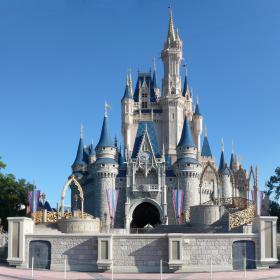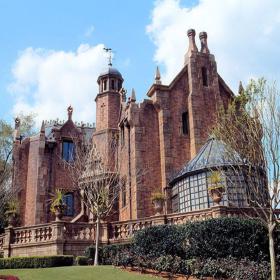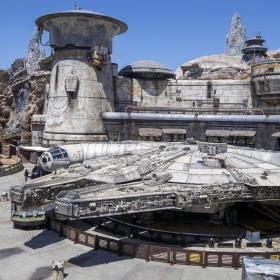Walt Disney World



My mother loved Walt Disney World. I didn’t for a long while — its charms aren’t particularly well tuned to jaded teenagers, especially pre-Star Wars and Marvel acquisitions, but after I visited as an adult I think I started to get what she liked about the place.
She wasn’t particularly sentimental, and I never really thought of her as being particularly into kids, so it wasn’t kind of the obvious reasons you might associate with Disney. I’ve been back a few times, and in between I’ve read up a lot about Walt Disney and the design that went into the parks, and I think I’ve come to appreciate it the way she did.
Around the time Walt Disney was coming up with his ideas for the park in the 1930s, there was an exhibition of miniature rooms touring the United States which fascinated him. They were designed by Narcissa Niblack Thorne, who married an heir to the Montgomery Ward department store chain and subsequently hired a small army of crafters and artisans to produce historically accurate rooms from the 16th century to the present day.
The attention to detail on these things is simply astonishing. Each is a room that you might find in a typical house of a particular style, like an English Great Hall from the 16th century or a New York sitting room in the 18th century, and it would be filled with tables and cabinets and woven rugs and small plates of half-finished food. Artists would paint small oil paintings to hang on the walls. Chairs are fashioned of oak or mahogany or cherry based on the original materials. Hidden lighting might suggest mid-morning sunlight through the windows, and often doors would be cracked open, allowing you to glimpse finished hallways leading deeper, just out of your sight.
There are no people, though. That’s one of the things Walt Disney loved. The rooms seem lived in, like the occupants folded their newspapers and set down their glasses and just stepped out for a moment. He became obsessed with creating the same thing on a larger scale. A complete world, all the details perfect, where you could step into the place the missing residents had stepped out of.
He never really managed it. His Main Street, USA was supposed to have a church with a graveyard which would have led to the Haunted Mansion but they never figured out how to make it work, and all the quaint haberdashers and shoe shops lining the streets were actually intended to be selling hats and shoes, not the cheap souvenirs they wound up selling. EPCOT — Experimental Prototype Community of Tomorrow — ended up being a bunch of dark rides with corporate tie-ins. Even Celebration, their planned community, ran into problems once people actually started living in it.
But the heart of what Walt was trying to do infuses everything at his parks. And for good or ill, it presages so much in the present world. It seems everything now is immersive, multimedia hypertexts with ARG elements sprawling across all manner of delivery platforms. Disney may be a corporate media juggernaut, they may be crassly commercial, but they’re still the best at creating worlds that make you feel like you’re actually there.